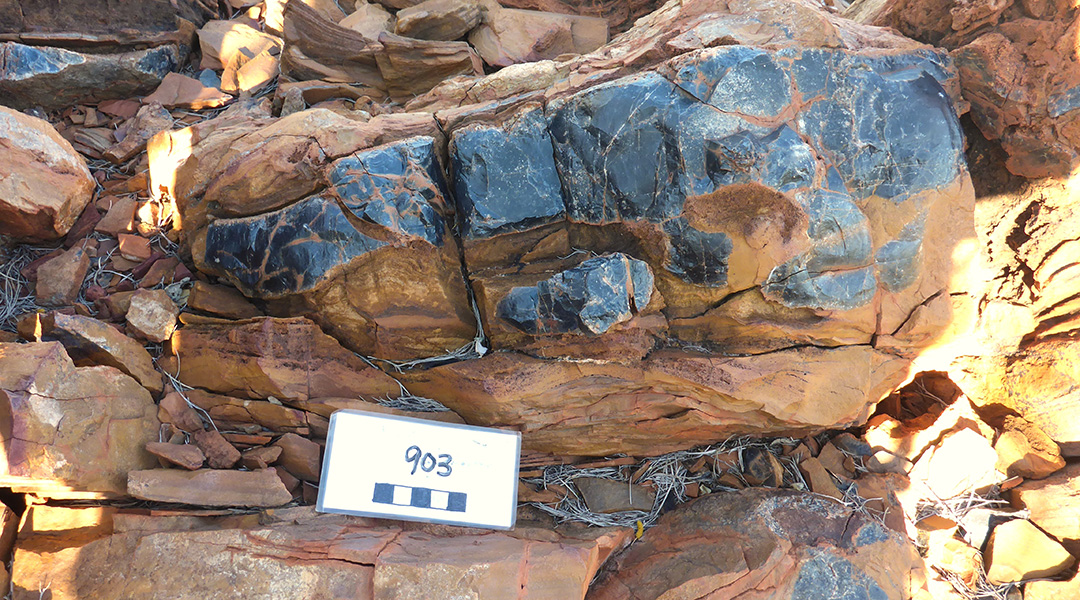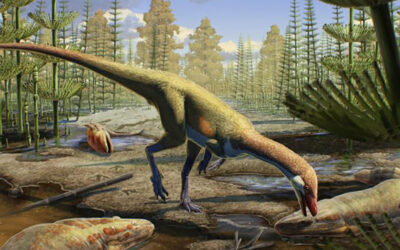Oxygen is one of the most important elements required for modern life to exist on our planet. It is also the sole component of our atmosphere’s ozone layer, a protective shield that keeps us safe from harmful solar radiation, and as such, safeguards many biological processes on Earth.
However, for a large part of Earth’s history, oxygen was entirely absent. Prior to 2.4 billion years ago, most life that existed on Earth existed as tiny microbes that had an anaerobic metabolism, meaning that they did not need oxygen to survive.
A curious thing began to happen around that time, when a new form of bacteria named cyanobacteria evolved the capacity to convert sunlight and water into energy — an early form of photosynthesis. This revolutionary development had unintended consequences, as the resultant byproduct of photosynthesis, oxygen, was released into the atmosphere in large quantities, likely killing a lot of the anaerobic life on the planet in an event geobiologists call the Great Oxidation Event.
New fossil discovery
The Great Oxidation Event caused fundamental changes to the chemistry of Earth’s surface environments, but until now, there have been few fossils that document the microbial evolution and diversity of this time period.
Excavated from the Turee Creek Group in Western Australia, researchers have recently uncovered a new, exceptionally preserved fossil in the form of a microscopic spherical aggregate of cells. This microfossil displays a considerable degree of complexity and represents a link between the Great Oxidation Event and the development of more complex life.
“We found a new type of fossil within ~2,400 million year old rocks in the Hamersley Ranges of Western Australia” explained Erica Barlow, an affiliate research professor at Penn State University and lead author of a study documenting the findings in Geobiology. “We didn’t know what the fossil was, so we went about trying to find out what type of life it could have been.
“The fossil is microscopic — about the width of a human hair — and is made entirely of organic material. Although the fossil is tiny compared to a lot of life today, it is actually relatively large for its ancient age. This, combined with the shape of the fossil, in the form of a consistent, spherical aggregate of round cells, makes the find intriguing, as most fossils of this age take the form of relatively simple filaments or single coccoids (spheres). Turns out, we couldn’t find any other fossil like it in the geological record.”
What sets this discovery apart from others and moves the field forward is the fossil’s striking resemblance to modern day algae, indicating a leap in complexity which provides insight into the evolution of this group of organisms.
“In order to try and pinpoint more information about this microfossil, we compared it to microorganisms in the modern day, including clusters of spherical cells made by the likes of cyanobacteria, as well as those made by algae,” explained Barlow. “The importance of this comparison is that cyanobacteria are prokaryotic (simple) microorganisms, while algae are eukaryotic (complex) microorganisms.
“We found that the microfossil has more in common, physically, with modern algae than modern bacteria. This suggests the microfossil may be a proto-eukaryote. Currently, the oldest eukaryotic microfossils are from rocks about 1.65 billion years old. However, our finding hints at the presence of eukaryotic life much earlier on in Earth’s history (up to ~750 million years earlier) than currently thought.”
Making sense of the rocks
One of the difficulties paleontologists face when analyzing fossils lies in the fact that most information relating to the organism is lost to time and decay. This includes physiological, genetic, biochemical, reproductive, and ecological information.
“There is no DNA preserved, nor complex organic biomolecules that can help us categorize the fossil,” said Barlow. “We really just have the morphology (physical characteristics) to go on and, even then, the morphology of a microorganism is subject to degradational changes during the fossilization process.”
This is especially true for microorganisms that existed several billion years ago, as many seemingly improbable events had to occur in order to make preservation possible.
“Firstly […] fossils of this age are extremely rare,” said Barlow. “Microorganisms need to first be preserved, then last billions of years buried within the Earth while being subject to hot temperatures and high pressures, and then be uplifted to the Earth’s surface, and then we have to find them!”
The rock type these fossils are found in is called chert, a silica-rich rock like quartz but much finer grained. It is an extremely good preserver of microscopic fabrics because of its very, very fine crystal size, which entraps and preserves microscopic particles inside.
“In contrast, other rock types that are commonly known to contain fossils, such as limestone, have a coarser crystal/grain size and, as a result, microscopic textures and finer signatures of life are not preserved as well because the formation of these carbonate minerals ‘blows up’ the cellular-level structure,” Barlow explained. “Limestones are, however, a great preserver of larger fossils from the younger geological record, especially fossils consisting of shells or bones.”
The fossils in the current study were also preserved because the level of metamorphism, the temperature and amount of pressure they were subjected to are low, meaning the shape and basic chemistry of the microfossils remain preserved across billion-year timescales.
Future directions
The discovery of these fossils will help paleontologists make great strides in our understanding of this ancient period in Earth’s history. However, there are many gaps in our knowledge that need to be filled.
“We don’t really have a good hold on what changes were going on in the biosphere at this time,” said Barlow. “We know that there were large changes in the environment — through a dramatic increase in atmospheric oxygen [during] the Great Oxidation Event, as well as multiple global glaciations around this time, which combined would have resulted in increased nutrients into the waterways and oceans, and presumably an increase in niche microenvironments for organisms to inhabit.”
This work also sheds light on our understanding of co-evolution between organisms and their environment. In many cases, organisms play a huge role in the development of the world around them and vice versa, creating an interesting dynamic between the two.
“In terms of the evolution of life, we know that cyanobacteria, or at least oxygen-producing microorganisms, were present for many millions of years prior to this time period,” explained Barlow. “The oxygen produced by these microorganisms ‘scrubbed’ the iron from the oceans, creating extensive deposits of rusted iron on the sea floor known as banded iron formations, or BIFs. Once the available iron was significantly diminished, this oxygen became ‘free’ and built up in the atmosphere, creating the significant, irreversible increase in the levels of atmospheric oxygen at around 2.4 billion years ago.”
Additionally, a lot of analysis regarding the fossil itself and how it fits into life’s developmental timeline must still be done. “The question remains as to whether this microfossil could have been a eukaryotic organism. The timing of the evolution of eukaryotic life is a big, open question within our field,” she said.
Barlow is continually exploring this fascinating area of science and by doing so hopes to shed light on our origins in the process. “I look forward to continuing research into early life on Earth, with the hope of better being able to understand our origins, and to one day be able to help uncover whether there is life (possibly fossilized life) elsewhere in the Universe,” she said.
Reference: Erica V. Barlow, et al., Distinctive microfossil supports early Paleoproterozoic rise in complex cellular organisation, Geobiology (2023). DOI: 10.1111/gbi.12576

















